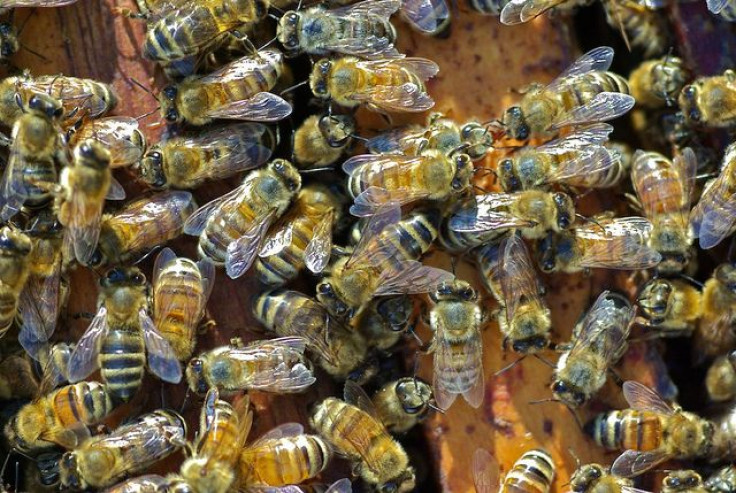Bee Stings For Science: Student Self-Experiments To Find The Worst Places To Get Stung

Better him than me: Cornell grad student Michael Smith recently stung himself 75 times, on purpose, all in the name of science. He carried out the experiment for more than five weeks, suffering (was he?) bee stings all over his body in the hopes of determining the most painful place to get stung.
Well, he got his answer. At the end of his study Smith found the most painful places to suffer a bee sting are the nostril, the lip, and the penis, respectively. Prior research has already confirmed which bee stings hurt the most — the tarantula hawk’s sting is “blinding, fierce, shockingly electric,” according to the Schmidt Pain Index — but Smith found a dearth of solid evidence illustrating where those stings inflicted the most damage. So he did what any scientist worth his salt would do: He made himself the subject.
“All the pain ratings collected in this experiment came from one person (the author), to minimize the number of people stung,” he wrote in his report. In total, Smith stung himself on 25 different locations, including his palm, his nipple, his cheek, and his other cheek, effectively turning his own body into a real-life game of operation. While a tad foolish (or so his mother would probably say), the experiment stayed rigid in its format. Smith stung himself between 9 and 10 a.m. each morning, used his forearm as a barometer for pain, and stung each location three times.
He allowed himself five stings per day, after having taken the bees from the cage, as he writes, “haphazardly with forceps.” He would press each bee to his skin and hold it there until he felt the sting. Five seconds later, he would remove the bee and leave the stinger embedded for a full minute. Then he rated each sting on a scale of one to 10.
Interestingly, the areas that hurt the most weren’t necessarily the ones covered by the thinnest layer of skin. The upper arm has ample nerve endings and far less thick skin compared to the palm, but Smith found the palm to be one of the most painful places to get stung, rating it a 7.0 on average. The upper arm, meanwhile, registered only a 2.3. Of course, some areas were no-brainers. His top three — the nostril, lip, and shaft of his penis — pulled a 9.0, 8.7, and 7.3. At the request of an advisor, Smith avoided stinging his own eye. Surprisingly, he didn’t want to risk going blind because of the study.
The nose was probably his most unexpected finding. Surely all men shudder at the thought of having their penis stung by a bee, but the nose seems like a fairly tough patch of skin, at least compared to the upper arm. Not the case. “By the time I got round to the third round, I thought: I really don’t want to do my nose again,” he told National Geographic.
Smith’s findings aren’t meant to be generalized to the general public, he explains. Other people may have different reactions, and perhaps some that are more in accordance with conventional notions about pain and sensitivity. In addition, Smith’s assessments of pain are inherently subjective. The ratings he assigned to skull stings, for example, received the lowest score of all body parts. But for other people the sensation could be unbearable.
“If someone else did this, they’d probably have different locations that they felt were worst,” he told Nat Geo. However, “I didn’t see a lot of merit in repeating this with more subjects.”
Source: Smith M. Honey bee sting pain index by body location. Peer J. 2014.



























